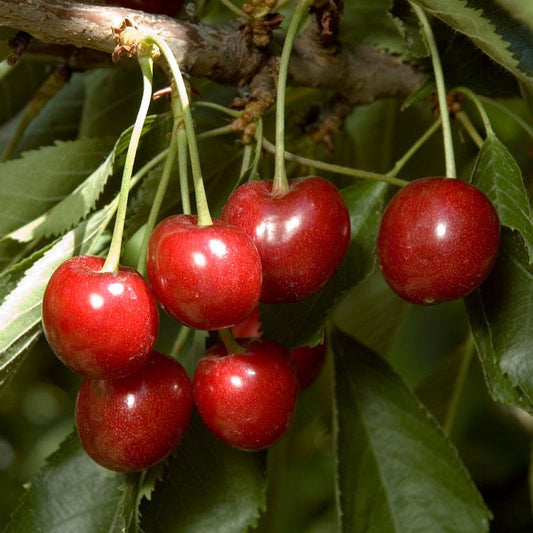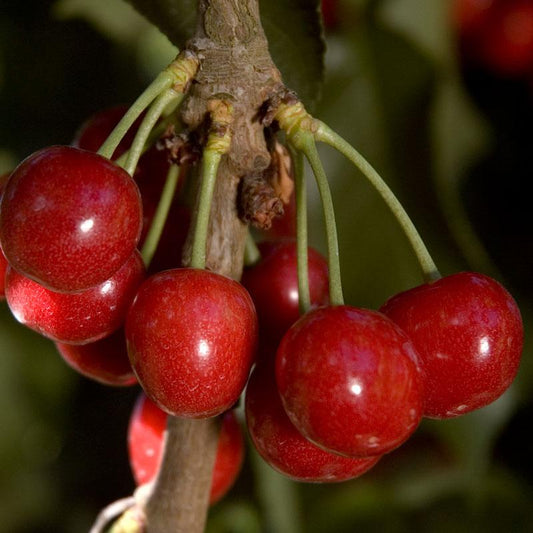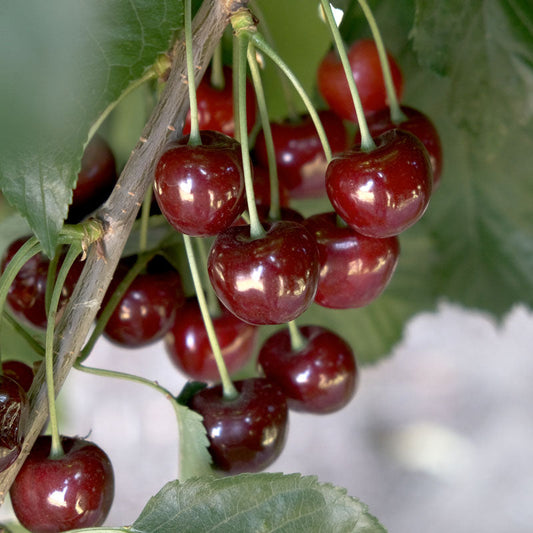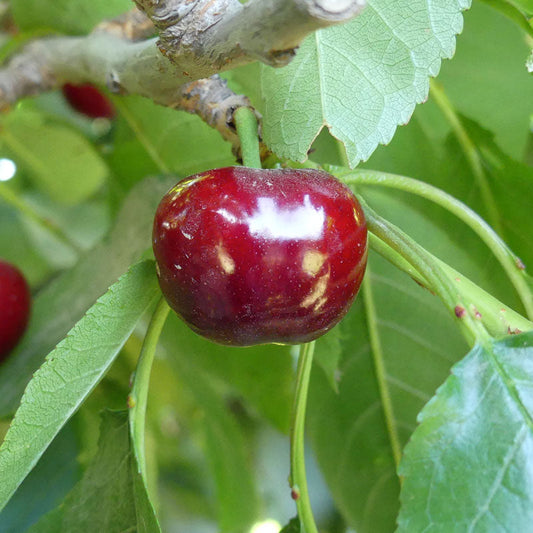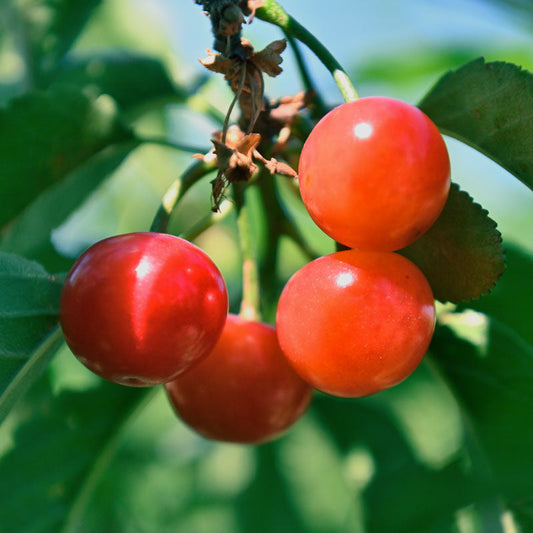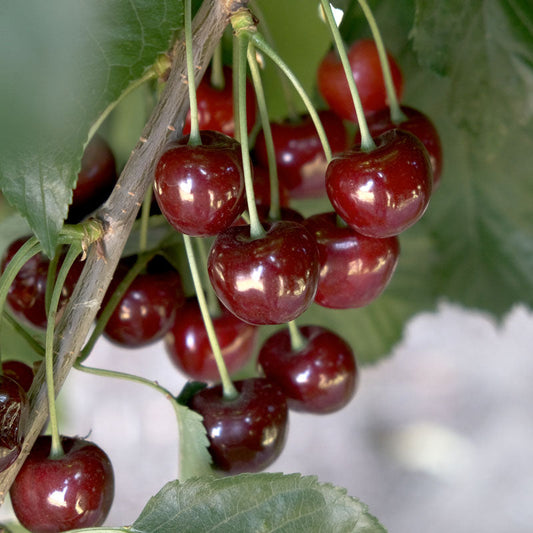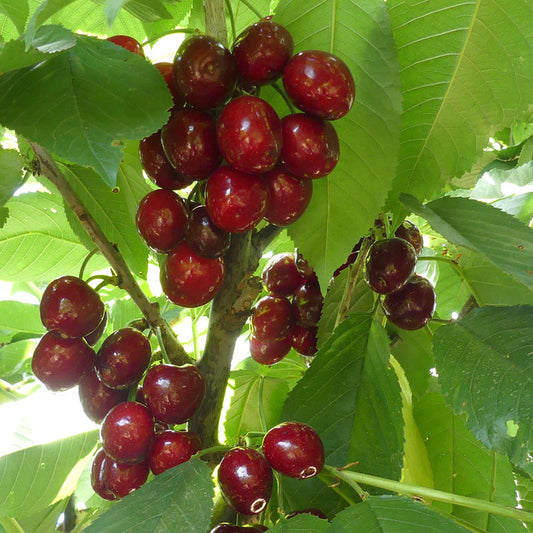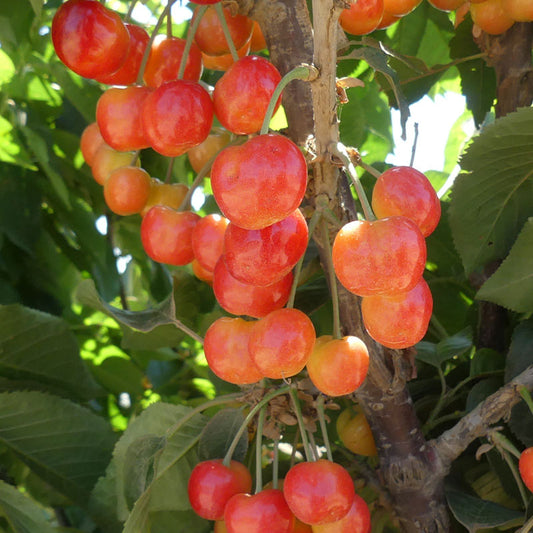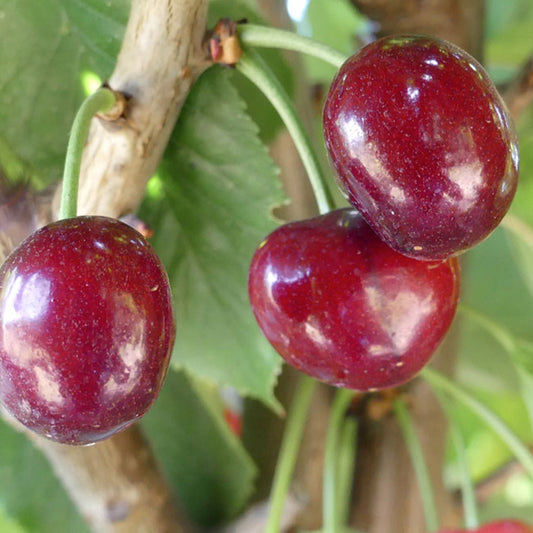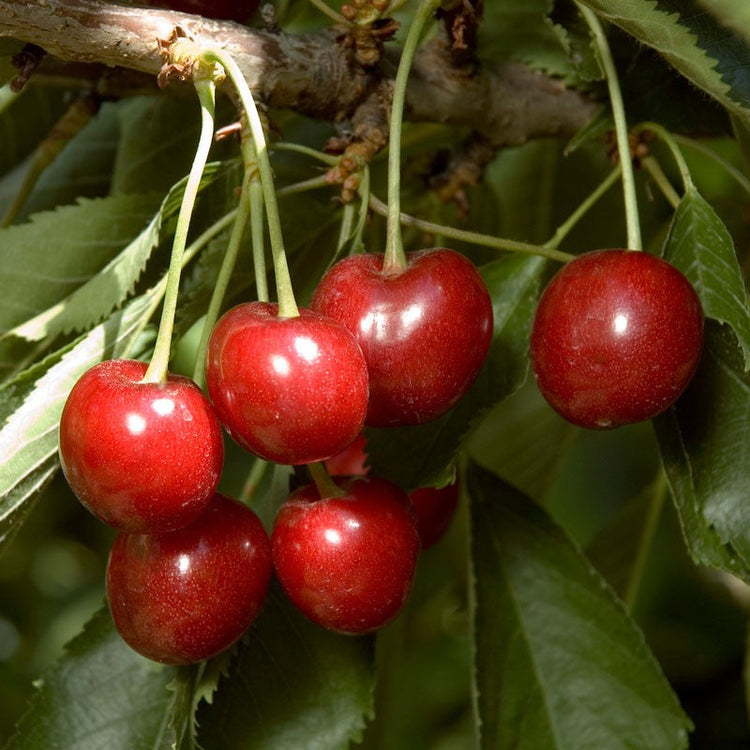Our Bare Root Cherry Trees
Cherries are a practical and rewarding addition to any home orchard, provided the climate and soil conditions suitably. These trees are known for their ease of cultivation and low maintenance requirements once established, making them reliable producers of delicious fruits. On the GrowOrganic website, you can find a diverse selection of bare-root cherry trees, each with its unique characteristics and flavors.
-
Bing Cherry (Prunus avium 'Bing'): Bing Cherries are perhaps the most well-known and widely cultivated sweet cherries. They produce large, dark red to nearly black succulent fruits that are exceptionally sweet and juicy. Bing Cherry trees are self-fertile, but planting another cherry variety nearby can increase fruit production.
-
Rainier Cherry (Prunus avium 'Rainier'): Rainier Cherries are famous for their golden-yellow skin with a bright red blush. The fruit is exceptionally sweet and considered one of the finest cherries for fresh eating. These trees also benefit from cross-pollination.
-
Lapins Cherry (Prunus avium 'Lapins'): Lapins Cherries are popular for those seeking a reliable and self-fertile sweet cherry variety. The fruit is large, dark red, and sweet, making it a favorite for fresh consumption and culinary uses.
-
Royal Rainier Cherry (Prunus avium 'Royal Rainier'): A variant of the Rainier Cherry, Royal Rainier Cherries boast a sweeter and more intense flavor. They have golden-yellow skin with a striking red blush, making them both delicious and visually appealing.
-
Montmorency Cherry (Prunus cerasus 'Montmorency'): Montmorency Cherries are tart cherries known for their versatility. They are excellent for pies, jams, and other culinary creations. These self-pollinating trees are a reliable choice for those who enjoy sour cherries.
-
Stella Cherry (Prunus avium 'Stella'): Stella Cherries are sweet and self-fertile, producing medium-sized, dark red fruits that are perfect for fresh eating. They are a great choice for home gardeners looking for an easy-to-grow sweet cherry variety.
-
Van Cherry (Prunus avium 'Van'): Van Cherries are self-pollinating sweet cherries known for their rich flavor. They produce medium to large, dark red fruit that is both sweet and juicy, making them a delightful addition to your orchard.
Cherry trees are renowned not only for their delicious fruits but also for their ornamental value. They grace the landscape with their stunning cherry blossoms during different growing seasons, adding beauty to your garden.
Cherry trees are best adapted to regions with moderately cool summers, as they dislike high humidity. They are the last fruit trees to bloom in spring, which minimizes the risk of late frosts damaging the blossoms, and they are among the first to ripen, offering an early fruit harvest.
It's important to note that most cherry varieties require another tree for cross-pollination, except for some self-fertile types. Additionally, cherry trees are sensitive to wet, compacted soils, which can lead to root diseases. Proper soil preparation and drainage are essential for their health.
Cherries are coveted by birds, so bird protection measures may be necessary to safeguard your fruit. Additionally, cherries can be susceptible to brown rot and bacterial canker, so monitoring and appropriate disease management practices are advisable.
The cherry trees offered by GrowOrganic come in various sizes and rootstocks to suit your space and preferences. Semi-dwarf trees are typically on Maxma Rootstock, while standard trees are on Mazzard Rootstock, reaching about 30-40 feet if left unpruned. Dwarf trees are on Newroot-1 Rootstock and reach about 70-80% of the standard size, or approximately 25-32 feet if unpruned. These trees are generally two years old and should begin to bear fruit around their fourth year of growth.
Cherry trees offer both beauty and bounty to your garden. You can enjoy a delightful cherry harvest season after season with the right selection of varieties and proper care. Explore the diverse range of cherry trees available on the GrowOrganic website and bring the sweet and tart flavors of cherries to your home orchard this season.
For more information, see our Fruit Tree Central collection of blogs and videos.


